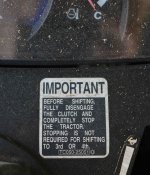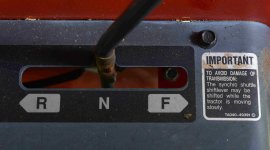Oaktree
Super Member
Other than a lawn tractor, I've never had an HST, but I can see its advantages for doing loader work, snow plowing, tilling, etc. Maybe not so much for bush hogging or other uses where you're using it at a constant speed/direction though.I have been using tractors for bucket work for 55 years. The first was a on Farmall H with a spring bucketTo me, nothing compares to hydro. The people here disagreeing, probably don't have a lot of experience doing bucket work with a hydro. You sacrifice HP to be sure, but simply by more HP to match your PTO demands!
Not planning on replacing my current tractor, but I'd definitely consider an HST one if I were to. Realistically, how much power do you lose with one vs a geared tractor?


